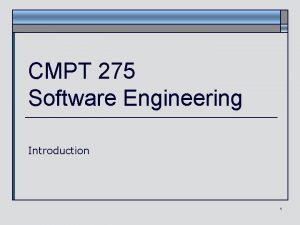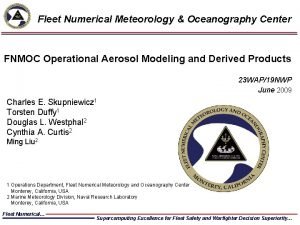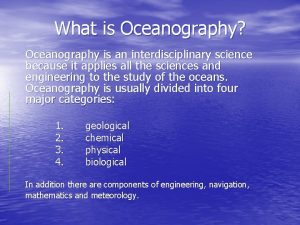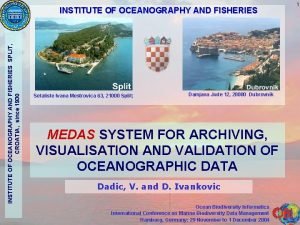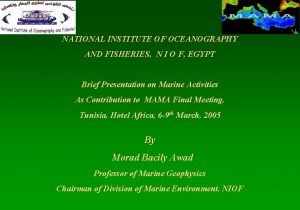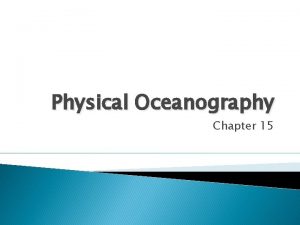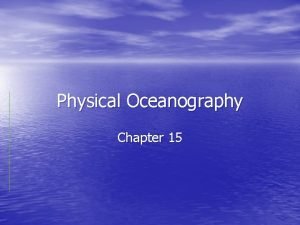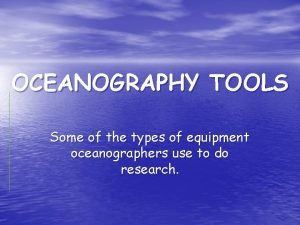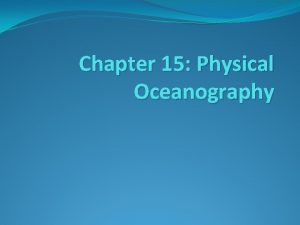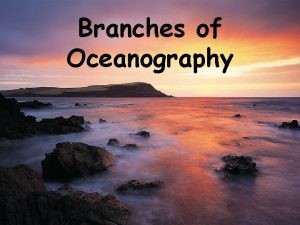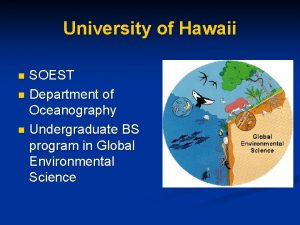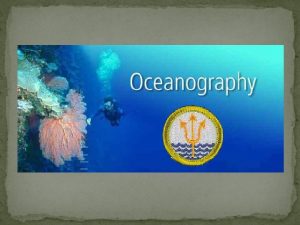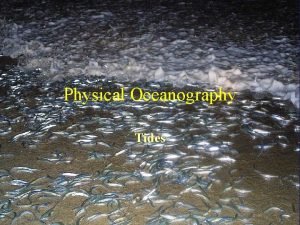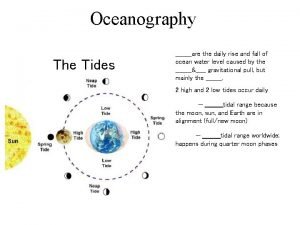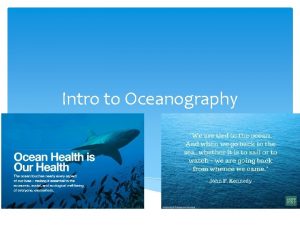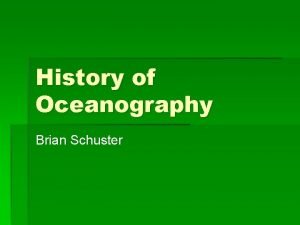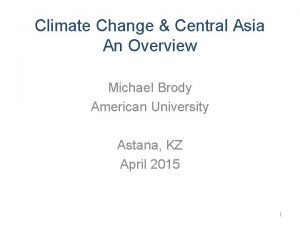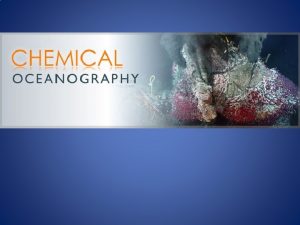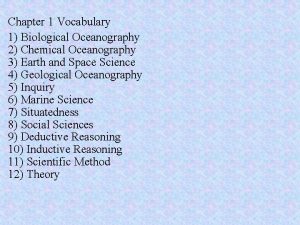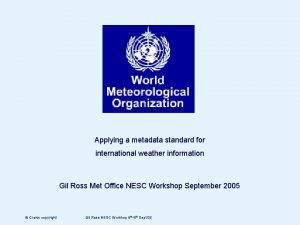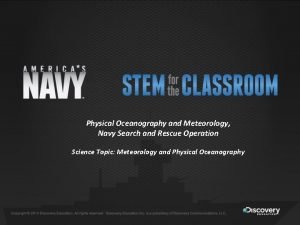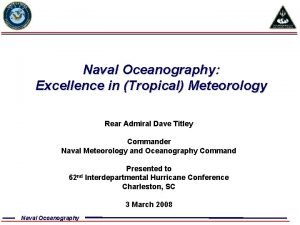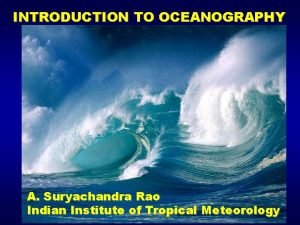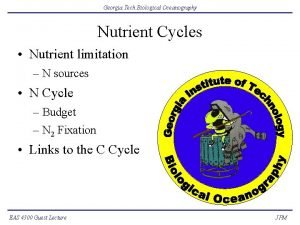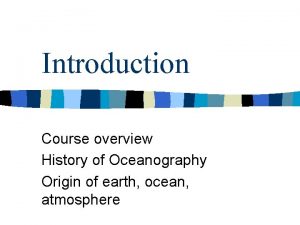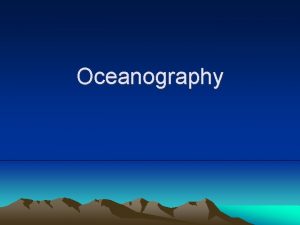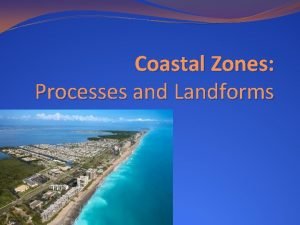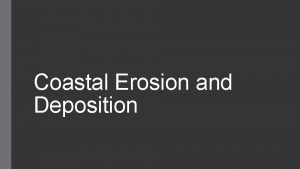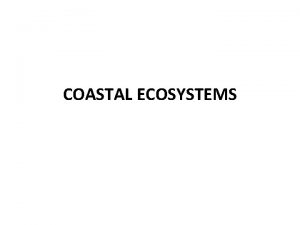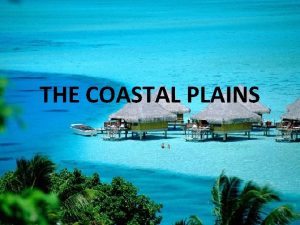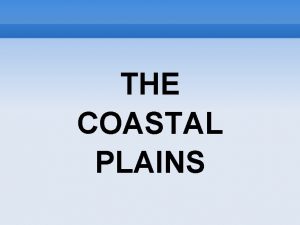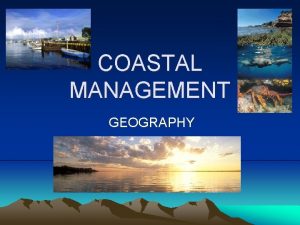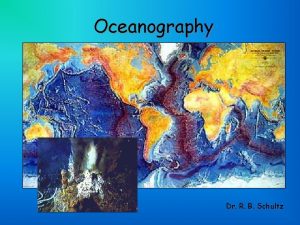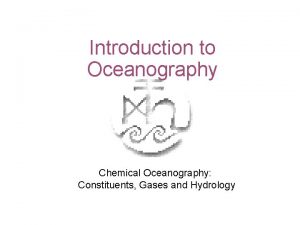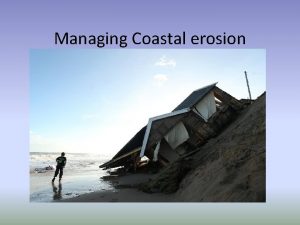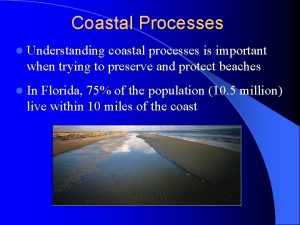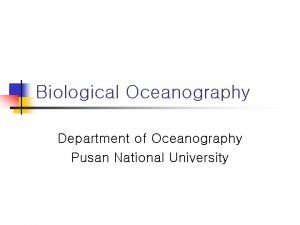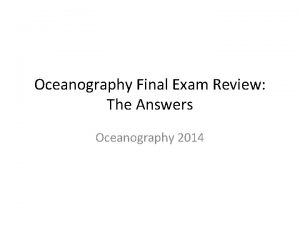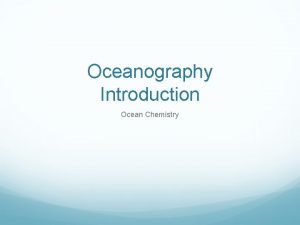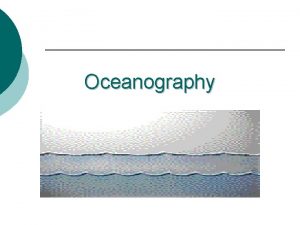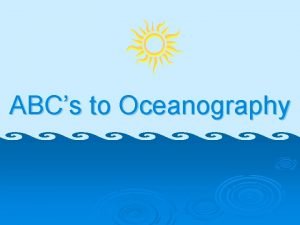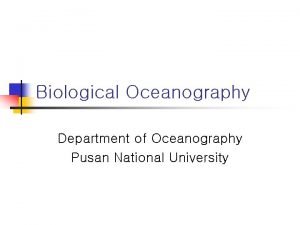SATELLITE OCEANOGRAPHY AND COASTAL ZONES IMPORTANT TOPICS IN



























- Slides: 27

SATELLITE OCEANOGRAPHY AND COASTAL ZONES – IMPORTANT TOPICS IN LECTURE COURSE ON REMOTE SENSING Prof. Sergey Victorov St. Petersburg Research Centre for Ecological Safety, Russian Academy of Sciences

PLAN The University n The author n The purpose of the Course n Its content n Regional and local aspects n Hot news n Useful sources n

WHERE St. Petersburg State University (founded in 1724) n Faculty of Geography and Geoecology n Chair of Climatology and Monitoring of the Environment n 4 -th year undergraduate students n

Why Victorov ? n n n First-hand experience Head of Laboratory for Satellite Oceanography, State Oceanographic Institute, 1977 -1995 Head, Laboratory for Coastal Zone Study, Vice Director Science, Research Institute of Remote Sensing, 1995 -2010 WMO Reporter for Oceanic Satellites (1990 s) Author of several monographs, including REGIONAL SATELLITE OCEANOGRAPHY (London, 1997)

Following Mr. Jeff Wilson. . . n Presentation at the plenary session on 27 April 27, 2010 n. WHO NEEDS TO BE TRAINED FOR WHAT ?

n. BALANCED AND HARMONIZED COURSE n. A KIND OF INTRODUCTION TO….

CONTENT-part 1 n n n In the first part of lecture course the basics of remote sensing are presented, along with information on “space observation systems”, types of satellite orbits, payload sensors, formats of satellite data and methods of imagery processing.

SMOS 3 antennas and 2 solar panels make a star

CONTENT-part 2 Here the applications of satellite imagery in various Earth sciences are presented. n Among these applications satellite oceanography and coastal zone problems are dominating. n


Topics The following topics are considered: El -Niño phenomenon, dynamics of sea ice, protection of coral reefs, seasonal blooms, hurricanes, oil spills detection, safety-at-sea and others. n Of special importance are the problems of remote sensing change detection in coastal zone. n

French Guiana’s coastline Shifting of madbanks threatens turtles…………………. . Spot

Regional aspects n The Baltic Sea is used as a case study area to present the techniques and approaches of “Regional Satellite oceanography”.

3 August 1999 Sea. Wi. FS

Local aspects The Neva Bay n The Eastern part of the Gulf of Finland n







Hot news From time to time I insert “Hot news” talks and deal with the just launched satellites and their payloads as well as other space news. n For example, SMOS satellite was launched on November 2, 2009……. n

02. 11. 2009 n n n NEW ! SMOS was launched on November 2 (2: 50 CET) SMOS + Soil Moisture and Ocean Salinity Live…………. 09: 10…. . 10: 02 local (St. Petersburg) time – start was shown on the INTERNET (in the course of a lecture) n Sat-sensors. ppt

Useful sources ESA n CNES n

Feedback Anonymous Questionnaire at the end of the course n YES n Useful n Interesting n Exercises are necessary and needed n

4 /10/1957 12 /04/1961 20/07/1969

4 /10/1957 12 /04/1961 THANK YOU
 Crash course weather
Crash course weather How do littoral zones differ from riparian zones?
How do littoral zones differ from riparian zones? Software engineering important topics
Software engineering important topics Fnmoc meteorology products
Fnmoc meteorology products Why is oceanography considered an interdisciplinary science
Why is oceanography considered an interdisciplinary science сплит institute of oceanography and fisheries
сплит institute of oceanography and fisheries Institute of oceanography and fisheries
Institute of oceanography and fisheries Chapter 15 physical oceanography
Chapter 15 physical oceanography Chapter 15 physical oceanography
Chapter 15 physical oceanography Oceanography tools
Oceanography tools Chapter 15 physical oceanography
Chapter 15 physical oceanography 5 branches of oceanography
5 branches of oceanography University of hawaii oceanography
University of hawaii oceanography Occacaris
Occacaris Oceanography
Oceanography Oceanography
Oceanography Woods hole
Woods hole Chemistry oceanography
Chemistry oceanography Polynesians oceanography
Polynesians oceanography Scripps institution of oceanography
Scripps institution of oceanography Chemistry oceanography
Chemistry oceanography Chemical oceanography definition
Chemical oceanography definition Chemistry oceanography
Chemistry oceanography Search by image
Search by image Oceanography
Oceanography Oceanography
Oceanography Oceanography
Oceanography History of oceanography
History of oceanography


